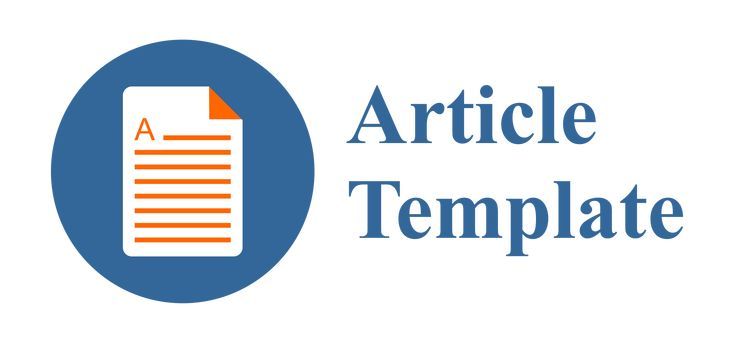Evaluasi Penggunaan Flowgorithm dalam Pembelajaran Algoritma Pemrograman menggunakan Technology Acceptance Model (TAM)
DOI:
https://doi.org/10.29408/edumatic.v8i1.25413Keywords:
Flowgoritm, Algoritma Pemogrman, TAMAbstract
be able to automate work and software development. However, a programmer must understand the basics of computational thinking that often causes a problem for students who are desirous of becoming programmers. This extensive research aims to evaluate student's acceptance of the use of flow Flogorithm using the Technological Acceptance Model (TAM) method. This type of research is quantitative and is conducted by using a survey method which involves distributing questionnaires to around 96 respondents who have particularly studied programming algorithms. Furthermore, the random sampling technique was used in the sampling. The analysis was carried out using the PLS-SEM method which consists of a measurement model and structural model with five variables, namely ease of use, perceived usefulness, attitude towards use, intention, and actual use. The result of the research shows that the acceptance of the Flowgorithm has a positive influence on all the set of variables, except for the perceived ease of use on attitude toward using.
References
Damopolii, Z. D. P., Koniyo, M. H., & Takdir, R. (2021). Perancangan media pembelajaran berbasis audio visual pada materi looping mata kuliah algoritma dan pemograman dasar universitas negeri gorontalo. Inverted: Journal of Information Technology Education, 1(2), 64-74.
Gajewski, R. R. (2018). Algorithms, programming, flowcharts and flowgorithm. E-Learning and Smart Learning Environment for the Preparation of New Generation Specialists, 393-408.
Geasela, Y. M., Hartono, H., Sesilia, M., Winarto, H., & Pratiwi, H. (2022). Analisis penerimaan aplikasi asset digital menggunakan technology acceptance model (TAM). Jbase - Journal Of Business And Audit Information Systems, 5(2). https://doi.org/10.30813/jbase.v5i2.3778
Ghozali, I. (2021). Partial least squares konsep, teknik dan aplikasi menggunakan program smartpls 3.2.9 untuk penelitian empiris . Badan Penerbit Universitas Diponegoro.
Ho, W. K., Looi, C. K., Huang, W., Seow, P., Chan, S. W., & Wu, L. (2021). Flowgorithm: A possible passage from algorithmic reasoning to creatively founded mathematical reasoning. In W.-C. Yang, D. B. Meade, & M. Majewski (Eds.), In Proceedings of the Asian Technology Conference in Mathematics (pp. 97-111). Mathematics and Technology, LLC.
Janpla, S., & Piriyasurawong, P. (2018). The development of problem-based learning and concept mapping using a block-based programming model to enhance the programming competency of undergraduate students in computer science. Tem Journal, 7(4), 708–716.
Kourouma, M. K. (2016). Capabilities and features of raptor, visual logic, and flowgorithm for program logic and design.
Mousa, A. H., Mousa, S. H., Aljshamee, M., & Nasir, I. S. (2021). Determinants of customer acceptance of e-banking in iraq using technology acceptance model. Telkomnika (Telecommunication Computing Electronics And Control), 19(2), 421–431. https://doi.org/10.12928/telkomnika.v19i2.16068
Musyaffi, A. M., Khairunnisa, H., & Respati, D. K. (2022). Konsep dasar structural equation model-partial least square (sem-pls) menggunakan smartpls. Pascal Books.
Nurfaizah, S., Risal, M., & Musfirah, M. (2022). Penerapan sistem menajemen keselamatan dan kesehatan kerja. Jurnal Ilmiah Kesehatan Sandi Husada, 11(2), 392–402. https://doi.org/10.35816/jiskh.v11i2.797
Retta, A. M., Isroqmi, A., Nopriyanti, T. D., (2020). Pengaruh penerapan algoritma terhadap pembelajaran pemrograman komputer. Indiktika (Jurnal Inovasi Pendidikan Matematika), 2(2), 126–135. https://doi.org/10.31851/indiktika.v2i2.4125
Rosa A.S. (2021). Logika Algoritma Dan Pemograman Dasar. Bandung: Modula.
Rugelj, J., & Lapina, M. (2019, May). Game design based learning of programming. Proceedings of SLET-2019–International Scientific Conference Innovative Approaches to the Application of Digital Technologies in Education and Research (pp. 20-23).
Sakinah, S., Yusof, M., Ilias, K., Jabar, J., Bakary, S. A., Aunah, S., & Nordin, S. (2021). Aplikasi alat pengarang grafik flowgorithm dalam meningkatkan kefahaman dan minat dalam pembelajaran algoritma pengaturcaraan pelajar matrikulasi. Jurnal Penyelidikan Dedikasi, 19(2), 62-81.
Sari, R. E. (2022). Implementasi Algoritma C4. 5 Untuk Klasifikasi Faktor Penyebab Kesulitan Belajar Fisika Pada Siswa SMA. SkripsiKu-2022, 1(2).
Smrti, N. N. E., Sukenada, A. I. P. G., Kadek, D. T. R. N., Adnan, A., & Ode, J. P. P. (2023). Flowgorithm Sebagai Penunjang Pembelajaran Algoritma dan Pemrograman. Jurnal Bangkit Indonesia, 12(1), 56-64.. https://doi.org/10.52771/bangkitindonesia.v12i1.218
Stefanowicz, M., & Sasak-Okoń, A. (2023). Algopoint as an original didactic tool for introductory programming using flowcharts. International Conference On Computer Supported Education, Csedu, 1, 162–170. https://doi.org/10.5220/0011826300003470
Uska, M. Z., & Wirasasmita, R. H. (2018). Analisis Teknologi Smartphone dalam Mendukung Kegiatan Akademis di Universitas Hamzanwadi Menggunakan Technology Acceptance Model. Edumatic: Jurnal Pendidikan Informatika, 2(2), 103-113. https://doi.org/10.29408/edumatic.v2i2.1086
Waris, I., Ali, R., Nayyar, A., Baz, M., Liu, R., & Hameed, I. (2022). An Empirical Evaluation of Customers’ Adoption of Drone Food Delivery Services: An Extended Technology Acceptance Model. Sustainability (Switzerland), 14(5). https://doi.org/10.3390/su14052922
Weng, F., Yang, R. J., Ho, H. J., & Su, H. M. (2018). A tam-based study of the attitude towards use intention of multimedia among school teachers. Applied System Innovation, 1(3), 1–9. https://doi.org/10.3390/asi1030036
Wijanarko, E. W. S., & Adhisa, R. R. (2023). Media pembelajaran object detection perangkat jaringan komputer menggunakan machine learning berbasis desktop. Edumatic: Jurnal Pendidikan Informatika, 7(2), 207–216. https://doi.org/10.29408/edumatic.v7i2.19826
Downloads
Published
How to Cite
Issue
Section
License
Copyright (c) 2024 Muhammad Zida Hisamuddin, Maria Ulfah Siregar

This work is licensed under a Creative Commons Attribution-ShareAlike 4.0 International License.
All articles in this journal are the sole responsibility of the authors. Edumatic: Jurnal Pendidikan Informatika can be accessed free of charge, in accordance with the Creative Commons license used.

This work is licensed under a Lisensi a Creative Commons Attribution-ShareAlike 4.0 International License.




